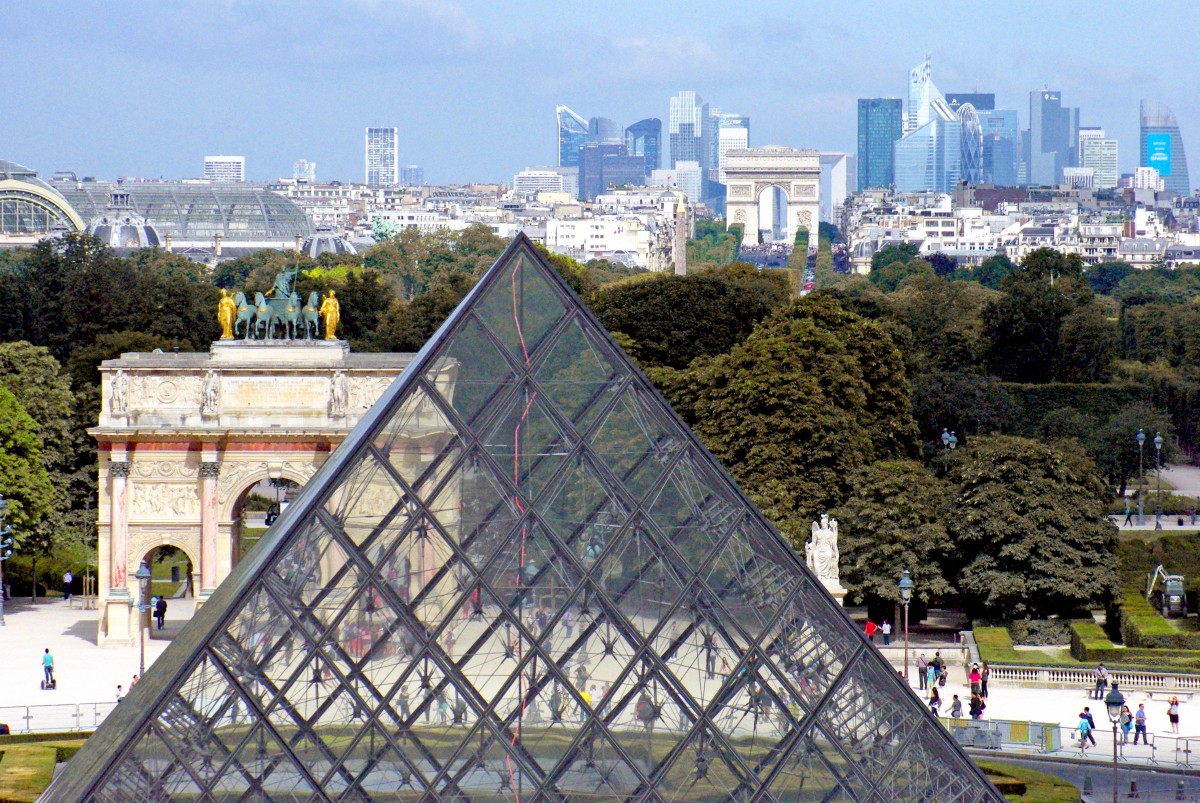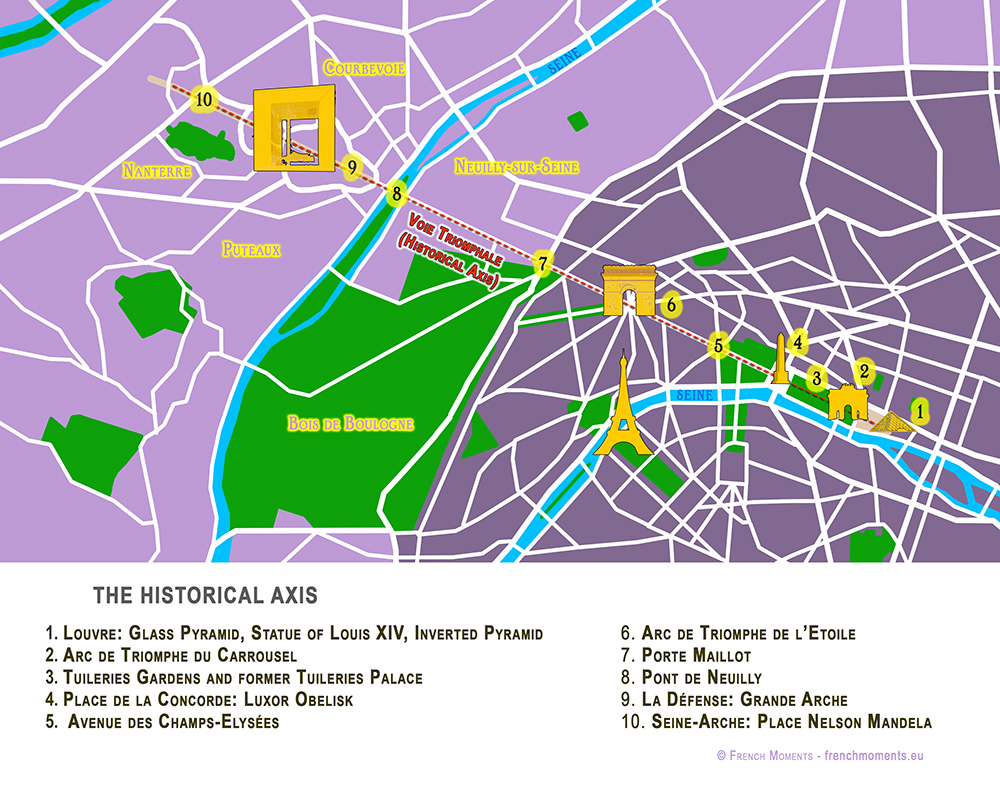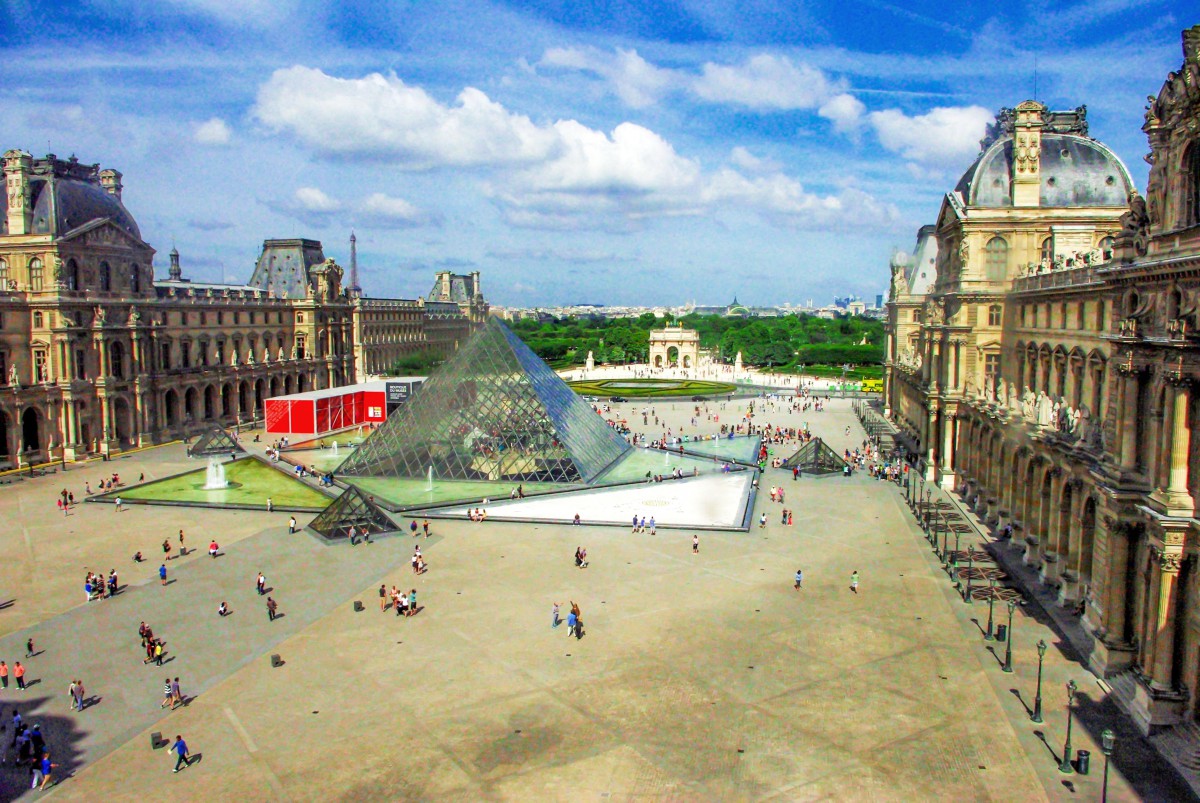|
|
Astronomical alignment[edit]
Looking east through nave on 23 June 1976, two days after the summer solstice Mary Magdalene's relics in the crypt
In 1976, Hugues Delautre, one of the Franciscan fathers charged with stewardship of the Vézelay sanctuary, discovered that beyond the customary east-west orientation of the structure, the architecture of La Madeleine incorporates the relative positions of the Earth and the Sun into its design. Every June, just before the feast day of Saint John the Baptist, the astronomical dimensions of the church are revealed as the sun reaches its highest point of the year, at local noon on the summer solstice, when the sunlight coming through the southern clerestory windows casts a series of illuminated spots precisely along the longitudinal center of the nave floor.[13][14][15][16][17]
|
|
|
|
|
Astronomical alignment[edit]
Looking east through nave on 23 June 1976, two days after the summer solstice Mary Magdalene's relics in the crypt
In 1976, Hugues Delautre, one of the Franciscan fathers charged with stewardship of the Vézelay sanctuary, discovered that beyond the customary east-west orientation of the structure, the architecture of La Madeleine incorporates the relative positions of the Earth and the Sun into its design. Every June, just before the feast day of Saint John the Baptist, the astronomical dimensions of the church are revealed as the sun reaches its highest point of the year, at local noon on the summer solstice, when the sunlight coming through the southern clerestory windows casts a series of illuminated spots precisely along the longitudinal center of the nave floor.[13][14][15][16][17]
|
|
|
|
|
ISLA SAN GIORGIO (VENECIA)=GEORGE LEMAITRE
Just after midday on July 22, 1946, Zionist terrorists, under the leadership of Menachem Begin, set the fuses on bombs planted in the basement of the King David Hotel in Jerusalem. At 12:37 a huge explosion ripped through the building, killing 91 people. Among the dead were 25 Britons, 41 Arabs, and 17 Jews.
|
|
|
|
|
 archivo archivo
13 julio 1969: Pablo VI recuerda en ángelus la primera misión del "Apollo 11"
El Osservatore Romano, recuerda esta efemérides, en lo que fue un momento histórico, que marco el mundo. Marcello Filotei recuerda el 20 de julio cuando los astronautas llegaron a la luna
Patricia Ynestroza-Ciudad del Vaticano
“La ciencia ficción se hizo realidad el 20 de julio de 1969, cuando los astronautas estadounidenses Neil Armstrong y Buzz Aldrin pisaron la luna a la que habían llegado después de cuatro días de viaje a bordo del Apollo 11. El tercer miembro de la misión, Michael Collins tuvo mala suerte, a pesar de que él dijo que no”.
Filotei recuerda que Collins era el único que podía pilotar el módulo de mando, y tenía que permanecer en órbita mientras los otros dos saltaban a la superficie lunar mientras el mundo los miraba en mundovisión. Era necesario, sin él, la misión no habría tenido éxito, pero no “debería haber sido fácil mantenerse alejado como Moisés para contemplar la "Luna prometida" sin poder alcanzarla. En cada órbita durante 48 minutos permaneció fuera del contacto por radio con la Tierra, las emociones que sintió, según informó, no eran de miedo ni de soledad, sino de "conciencia, anticipación, satisfacción, confianza, casi exaltación". En cualquier caso, continuó: "es desde los tiempos de Adán que nadie ha conocido semejante soledad humana".”
El momento de bajar a la luna
Los otros dos astronautas, tomaron más tiempo del esperado para salir del transbordador, “porque la mochila que llevaban detrás de ellos para asegurar su supervivencia era demasiado grande para pasar fácilmente por la escotilla”, cuenta Filotei, después de haber recolectado más de veinte kilogramos de piedras y haber plantado la bandera, en realidad solo lograron clavarla algunos centímetros porque el suelo era particularmente duro, regresaron a la nave.
Ante las maravillas de Dios ¿qué es el hombre?
Armstrong y Aldrin antes de regresar a la nave, dejaron en la superficie lunar una placa de oro en la que estaba grabado el Salmo 8: "Cuando veo tus cielos, obra de tus dedos, la luna y las estrellas que tú formaste, Digo: ¿Qué es el hombre, para que tengas de él memoria, y el hijo del hombre, para que lo visites? Le has hecho poco menor que los ángeles, y lo coronaste de gloria y de honra. Le hiciste señorear sobre las obras de tus manos; Todo lo pusiste debajo de sus pies”.
Papa Pablo VI quiso este mensaje en la luna
El mensaje al cosmos le había sido confiado por Pablo VI, quien ya había dirigido su pensamiento a la misión una semana antes. Fue el 13 de julio cuando el Papa Montini enfatizó que el momento iba "más allá de los elementos descriptivos de este hecho único y maravilloso". Se estaba haciendo historia y lo que más sorprendió al Papa fue "ver que no se trata de sueños". "La ciencia ficción se convierte en realidad", dijo, pero no se detuvo allí, sino que captó un aspecto particular de la misión: "Si consideramos la organización de cerebros, actividades, instrumentos, medios económicos, con todos los estudios, experimentos, Los intentos, la hazaña, la admiración se convierte en reflexión y la reflexión se curva sobre el hombre, el mundo, la civilización, de donde brotan novedades de tal sabiduría y de tal poder ".
Una vez más volvieron a surgir las preguntas habituales: "¿Quién es capaz de hacer tanto? tan pequeño, tan frágil, tan similar al animal, que no cambia y no sobrepasa por sí mismo los límites de sus instintos naturales, y tan superior, tan maestro de las cosas, ¿tan victorioso en el tiempo y el espacio? ¿Quiénes somos? Seiscientos millones de personas vieron la luna en vivo. La intuición de Pablo VI llamó la atención sobre la mano del hombre, colocando "esta criatura de Dios, incluso más que la misteriosa Luna, en el centro de este viaje".
https://www.vaticannews.va/es/papa/news/2019-07/efemerides-papa-pablo-vi-llegada-a-la-luna.html |
|
|
|
|
|
|
|
LAST UPDATED: 27 NOVEMBER 2024
You may know Paris for its cathedral Notre-Dame, the Eiffel Tower, its café culture and its amazing museums and art galleries. The French capital is also famous for its fantastic perspective that runs from the Louvre to La Défense. This is the ‘Voie Triomphale’, aka the Historical Axis of Paris.
This line is one of the most prestigious perspectives in the world. In fact, its design has inspired cities such as Buenos Aires, Washington DC, New Delhi and Canberra. In this article, we’ll learn more about the Historical Axis of Paris. We’ll discover the stunning monuments and I reveal to you some stunning facts.
What is the Historical Axis of Paris?
 The glass pyramid and the historical axis of Paris © French Moments The glass pyramid and the historical axis of Paris © French Moments
The Historical Axis, also known in French as “Axe Historique”, “Voie Triomphale” or “Voie Royale” is orientated on a 26° angle.
It follows the course of the Sun from its rising in the East to its setting in the West.
Oddly, this angle of orientation is the same as that of Paris’ Notre-Dame Cathedral, some 1,000 metres away from the Louvre Palace.
More than just a series of monuments placed along the axis, it seems that a complex symbolism was at work in the mind of the successive urban planners.

The Historical Axis runs through some of Paris’ most celebrated monuments and squares:
Let’s move along the Historical Axis of Paris, from East to West, starting from the Louvre.
The Palace of the Louvre

Today the great perspective starts at the Louvre, immediately beyond the Church of St Germain l’Auxerrois.
The crab-shaped Palace was the main residence of the kings of France until 1682, when Louis XIV, the ‘Sun King’, moved his court to Versailles. It currently houses one of the world’s most wonderful museums in a complex that is known as the “Grand Louvre”.
 The Louvre today © French Moments The Louvre today © French Moments
The controversial glass pyramid of the Louvre
President François Mitterrand left his mark with his pharaonic project of “Le Grand Louvre”. He wished to complete it for the bicentennial celebration of the French Revolution in 1989. The titanic project comprised of major renovation works and the construction of a new landmark along the Historical Axis: the celebrated (and controversial) Glass Pyramid.
But if you look closer, you’ll notice that the glass pyramid is not aligned with the other monuments on the Historical Axis.
That’s why something had to be added in this vast courtyard of the Louvre…
https://frenchmoments.eu/historical-axis-of-paris-la-voie-triomphale/ |
|
|
|
|
That's right: Sirius rises at 26 degrees south of east, or bearing 116 degrees, from the latitude of Paris, and this is the direction in which the Champs Elysées is aligned.
|
|
|
|
|
According to Pythagoras an entity is called a number when the product of itself is greater than the sum of itself. One is not a number, according to the above definition, it is god, generator of numbers. Two is also not a number, because both the product and the sum are equal to each other, that is, it is a coexisting god, a second generator of numbers. The numbers start with three because 3 X 3 = 9 an

The Tetraktys is the Essence of Teaching and the Sacred Symbol of the Pythagoreans. It consists of the first ten numbers (1-10) arranged in four rows (one in the first row, two in the second, three in the third and four in the fourth row) as shown in the picture. Tetraktyn was called “Tetradas”[1] which in Pythagorean Philosophy is the essence and meaning of the number four. Tetraktys is the fourth “triangular number”[2] thus showing another view of the relationship of Tetrad and Tetraktyos. In any case, we should not forget the relation of Tetraktys with “Ten”. From this the Tetraktys is mentioned according to Iamblichus with the prepositional names: Cosmos (decoration, ornament), Pan (the god Panas – Pan = All), Uranus, Atlas, Key, Aion, Memory, Gnomon, Eimarmene, Kratos, Phanis, Helios, Pythmen et al. By studying the concepts of numbers found in the Tetractyn and their relationships, the Pythagoreans argue that one reaches the attainment of wisdom.
The main relationship of Tetrad and Tetraktyos can also be seen from the famous relationship of the first four numbers with the ten they produce when added (1+2+3+4=10). From these first four numbers (1, 2, 3 & 4), it is possible to construct the ratios: “by four” (4:3, fourth), “by five” (3:2, fifth), “by all ” (2:1, Octave), which attribute to music the mentioned harmonic musical intervals which Pythagoras was the first to precisely determine with numerical reasons. These proportions create Harmony, which for the Pythagoreans has a literally cosmic meaning (hence its name “Cosmos”). The Pythagoreans used the Tetraktyn to swear, even invoking Pythagoras as a god, as can be seen from the “Golden Epics” where it is stated:
“Yes, with the immortal soul, delivered four times
always of a permanent nature.”
(yes, but the one who delivered to our soul the tetractyn,
which is the source of eternal nature.)
Numbers are related to geometric shapes. Thus the unit is related to the point, the dyad to the line, the triad to the triangle, and the tetrad or tetraktys to the tetrahedron (or triangular pyramid), the first geometric solid. Its symbol was considered the square which was also the symbol of the divine and perfection.[5]. Also wisdom was considered to be acquired from the four esoteric sciences for the Pythagoreans of arithmetic, music, geometry and astronomy. It is a symbol of God Apollo and the Pythagoreans connect the Tetraktyn with the Oracle of Delphi, as seen in the important “hearing” about existence mentioned by Iamblichus[6]: “what is the Oracle in Delphi? Tetraktys” (what is the Oracle of Delphi? Tetraktys).
There is another Tetraktys, as mentioned in Plato’s Timaeus, which is called a double Tetraktys and consists of eight lines created by the first eight numbers (1, 2, 3, 4, 5, 6, 7, which in total give a total of 36 (1+2+3+4+5+6+7+8=36). From another point of view this Quadrilateral is created, and thus connected to the regular Quadrilateral Quadrilateral, by the sum of the first four odd numbers and of the first four integers: (1+3+5+7)+(2+4+6+8)=36 as mentioned by Plutarch in “On Isis and Osiris”.

GOLDEN RATIO Φ ON THE PYTHAGORIAN SYMBOL
PARTHENON WAS BUILT on the PRNICIPLES of PYTHAGORAS
 
The FIRST FLYING MASCHINE was BUILT by the GREEK PYTHAGOEIAN PHILOSOPHER ARCHYTAS in TARANTO(CORINTHIAN COLONY) SOUTHERN ITALY.
For the Pythagoreans, a politician was the person who, after having been taught philosophy, returned to the world to be useful to others.
He is not interested in positions and powers but in the improvement of society.
The one who chose to become a politician could not pass to the stage of a mathematician, that is, one who can deliver lessons and teach.
Those who could had the advantage of living near Pythagoras.
Friendship and companionship were of the highest importance for the Pythagoreans and they considered that universal love was reflected in these two elements.
They were bound by an oath of secrecy over the higher teaching, the ceremonies and the sacred symbols.
Pythagoras offered mankind a universal “successful experiment” for this and later Plato would call education with music and gymnastics!!!!

ONE OF THE BASIC PYTHAGORIAN GROUNDS FOR: ARCHITECTURE, GEOMETRY, MUSIC, STEREOMETRY, ASTRONOMY, HARMONY AND PHILOSOPPHY

WHAT DID PYTHAGORAS SAYABOUT WOMAN=ΓΥΝΗ/GYNE
https://euphoriatric.com/pythagoras-the-nine-muses/ |
|
|
 Primer Primer
 Anterior
150 a 164 de 164
Siguiente Anterior
150 a 164 de 164
Siguiente
 Último
Último

|

